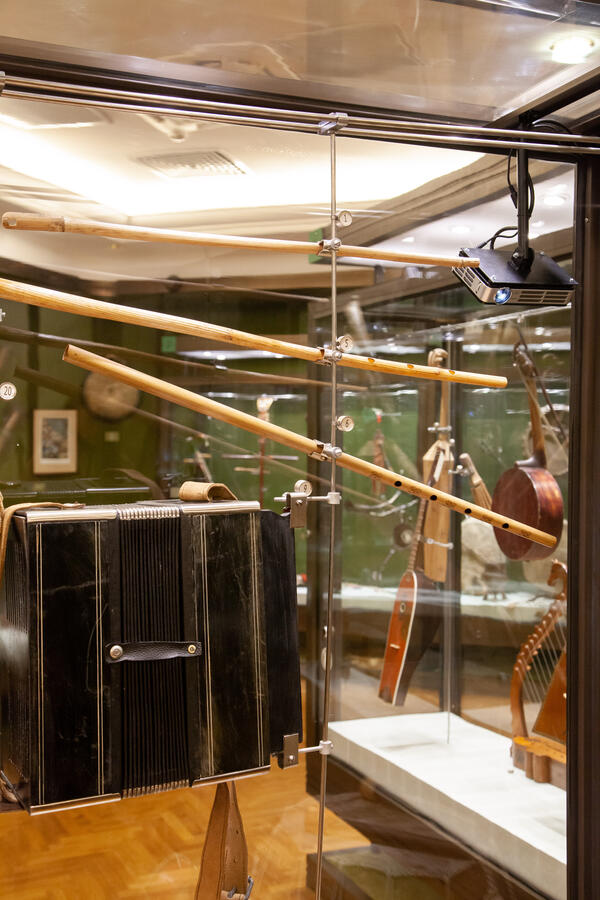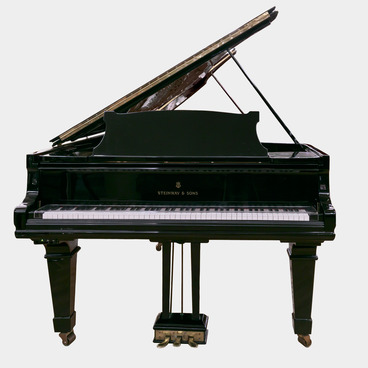The exhibition of the Museum of Music includes the most popular folk instrument in Bashkiria — the quray. It was made by the famous Bashkir actor, singer, and quray player Gata Suleymanov. Being a student of folklore, he collected and wrote down 250 ancient songs and legends and arranged 150 of them for the quray.
The quray is an open endblown flute made from the stem of the umbelliferous plant with the same name. The stem must be smooth, empty, and clean. Five rectangular openings are cut in the stem, four of them on the front side, and one at the back.
Traditionally, musicians have made their own qurays. The wide tip of the instrument is inserted between the teeth with one half of the upper opening covered with the upper lip and the other pressed against the tongue. By using the technique of overblowing, musicians expand the instrument’s range to two and a half octaves.
When starting a melody, the musician usually makes one long sound and then kind of slides down by a fifth interval with their voice. This unique guttural sound often accompanies the instrument’s melody.
The quray has a pleasant tone quality but a rather faint sound. Nevertheless, skilled musicians could achieve strong and resonant sound quality. Some players can imitate certain sounds, and voices of birds and animals. This instrument has been mostly used by men, but there have also been famous female quray players.
For the Bashkirs, the quray is not merely a musical instrument but also a means of passing down their historical knowledge from generation to generation. In the past, before performing a particular melody or song, the performers often told the story of its origin.
The quray is often mentioned in Bashkir epics, legends, and fairy tales. The ancient melody “Synrau Torna, ” or “The Crane Song” is performed exclusively on the quray because it is the only instrument that can imitate the cry of a crane.
The quray is one of the national symbols of the Bashkirs. The image of a quray flower with seven flower stalks is depicted on the coat of arms and flag of Bashkortostan.
The quray is an open endblown flute made from the stem of the umbelliferous plant with the same name. The stem must be smooth, empty, and clean. Five rectangular openings are cut in the stem, four of them on the front side, and one at the back.
Traditionally, musicians have made their own qurays. The wide tip of the instrument is inserted between the teeth with one half of the upper opening covered with the upper lip and the other pressed against the tongue. By using the technique of overblowing, musicians expand the instrument’s range to two and a half octaves.
When starting a melody, the musician usually makes one long sound and then kind of slides down by a fifth interval with their voice. This unique guttural sound often accompanies the instrument’s melody.
The quray has a pleasant tone quality but a rather faint sound. Nevertheless, skilled musicians could achieve strong and resonant sound quality. Some players can imitate certain sounds, and voices of birds and animals. This instrument has been mostly used by men, but there have also been famous female quray players.
For the Bashkirs, the quray is not merely a musical instrument but also a means of passing down their historical knowledge from generation to generation. In the past, before performing a particular melody or song, the performers often told the story of its origin.
The quray is often mentioned in Bashkir epics, legends, and fairy tales. The ancient melody “Synrau Torna, ” or “The Crane Song” is performed exclusively on the quray because it is the only instrument that can imitate the cry of a crane.
The quray is one of the national symbols of the Bashkirs. The image of a quray flower with seven flower stalks is depicted on the coat of arms and flag of Bashkortostan.




